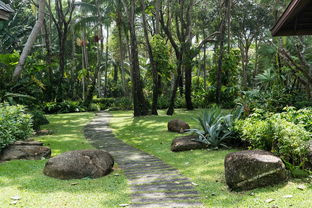Vietnamese coffee has been captivating palates around the world with its bold, unique flavors and aromatic allure. This enchanting brew isn't just a drink; it’s a cultural experience, deeply rooted in the daily lives of the Vietnamese people. From dawn till dusk, from bustling city streets to tranquil rural landscapes, one can witness the rich tapestry of life woven through the threads of steaming cups of this beloved beverage.
The Origins and Evolution of Vietnamese Coffee
The story of Vietnamese coffee begins in the late 19th century when French colonists introduced the robusta bean to the lush landscapes of Vietnam. Prior to this, Arabica beans were predominant, but the French favored the heartier robusta for its higher yields and resilience against pests and diseases. This choice proved fortuitous for Vietnam, setting the stage for its transformation into one of the world's largest coffee producers.
The Art of Brewing Vietnamese Coffee
The brewing method of Vietnamese coffee is as distinctive as the beans themselves. Traditionally, it involves a drip filter called a "phin." This simple yet effective device allows ground coffee to steep slowly, infusing the water with a deep, full-bodied flavor. What sets Vietnamese coffee apart is its use of condensed milk, which lends a creamy sweetness that balances the strong, often bitter notes of the robusta beans.

The process is both ritualistic and poetic, mirroring the serene rhythm of life in rural Vietnam. As the dark brew trickles through the phin, it is met with a generous pour of sweetened condensed milk. The resulting concoction, known as cà phê sữa đá (iced coffee) or cà phê nong (hot coffee), becomes more than just a drink—it transforms into a cherished moment of reflection and socialization.
Cultural Significance and Consumption Habits
Vietnamese coffee isn't merely a beverage; it’s a cornerstone of social interactions and daily routines. From the early hours of the morning to late-night conversations, coffee shops (known as cà phê) serve as communal hubs where stories are shared, friendships are forged, and the day’s affairs are discussed over a steaming cup.
In Vietnam, café sa đen (black coffee) is the purist's choice, sipped with an appreciation for its raw, unadulterated taste. For those who prefer a sweeter sip, the cà phê sữa đá provides a delightful contrast, making use of the ubiquitous condensed milk. This sweet-and-sour marriage reflects the intricate balance of tradition and modernity in Vietnamese culture.
Exploring Vietnamese Coffee Culture Abroad
Vietnamese coffee culture has transcended borders, capturing the imaginations and palates of coffee enthusiasts worldwide. The rise of specialized cafes and independent roasters dedicated to showcasing Vietnamese beans has further fueled global interest. The journey of these beans from the verdant hillsides of Vietnam to bustling cafes in New York, London, and beyond underscores their versatility and universal appeal.
For those eager to explore the nuances of Vietnamese coffee firsthand, a visit to a local cà phê shop offers an authentic experience. Engaging with baristas, who often have deep-rooted knowledge about coffee cultivation and preparation techniques, provides valuable insights into the artistry behind each cup.
Conclusion: Embracing the Journey of Vietnamese Coffee
Vietnamese coffee is not just a beverage; it is a cultural ambassador, inviting the world to savor the complex flavors, the meticulous craftsmanship, and the heartening spirit of Vietnam. Whether enjoyed in the quiet of dawn or the vibrant ambiance of a bustling street, each sip promises a voyage through the flavors, traditions, and stories that define this remarkable brew. So next time you find yourself in need of a moment of respite, consider the rich history and cultural significance behind every cup of Vietnamese coffee. Let the boldness and warmth of this beloved beverage transport you across continents and into the very essence of Vietnamese culture.
Now, here's your Vietnamese coffee link:
[Link to Vietnamese Coffee Experience]









